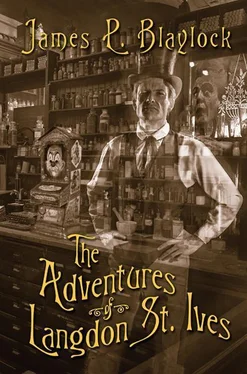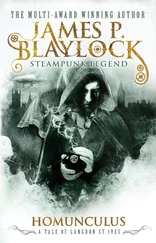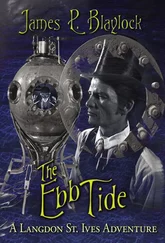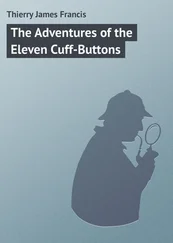James P. Blaylock
The Adventures of Langdon St. Ives
INTRODUCTION
by Tim Powers
Nobody who knew him in 1972 would have guessed that James Blaylock would one day be the most original science fiction writer alive, which he now is, Cordwainer Smith and Philip K. Dick no longer being with us. Blaylock also writes fantasy, and some people would say that’s all he writes — but those people would be noting the consistent tone and assuming a consistent substance. Lovecraft’s several science fiction stories often get categorized as supernatural horror for the same reason.
In 1972, though, when he and I were in college, I don’t think many people would have guessed he’d be a writer at all. He was a dedicated surfer in his spare time, and his part-time job was doing construction clean-up — knocking down garages and sawing the roofs off of houses, sometimes at the wrong addresses by mistake. And for a while, before changing his major to English, he was a Psychology major. That didn’t work out, luckily — I can’t think of anybody less suited to that narrow discipline than Blaylock — though the world may have thereby lost a spectacular psychiatrist. I picture a sort of mix of Carl Jung and Federico Fellini.
He was already a writer, though. So was I. Neither of us had had anything published, but we were busily writing stories, and soon began long, never-to-be-finished novels. Of course we both read incessantly, the assigned books for our English literature classes blending in with the stuff we were reading on our own incentive, and it quickly became clear that, although in many ways we were writing the same sorts of adventure-and-grotesquerie stories, we were approaching them from very different points of the literary compass. I had grown up on writers like Fritz Leiber and Theodore Sturgeon, Henry Kuttner and Leigh Brackett, while Blaylock was operating from a foundation of Robert Louis Stevenson, Mark Twain, and P. G. Wodehouse.
And Lawrence Sterne. A lot of people love Tristram Shandy , but I don’t think anybody since Sterne himself has been as compatible to that book as Blaylock is. Corporal Trim’s apologia in it, which the character Doctor Slop admires for the depth of its philosophy as much as for its insight into physiology, could be a summary of Blaylock’s oeuvre : “I infer, an’ please your worship, replied Trim, that the radical moisture is nothing in the world but ditch-water — and that the radical heat, of those who can go to the expence of it, is burnt brandy, — the radical heat and moisture of a private man, an’ please your honour, is nothing but ditch-water — and a dram of geneva — and give us but enough of it, with a pipe of tobacco, to give us spirits, and drive away the vapours — we know not what it is to fear death.”
Trim’s philosophy is echoed by many Blaylock characters, as when St. Ives says, in Lord Kelvin’s Machine , “We must have our hand in. It’s nothing more nor less than the salvation of the Earth, secularly speaking, that we’re involved in,” and Hasbro asks, “Shall we want lunch first, sir?” and St. Ives replies, “Kippers and gherkins, thank you.”
And the business about radical heat and radical moisture particularly anticipates Blaylock, who likewise doesn’t hesitate to deal with principles of science in his fiction, especially in the St. Ives stories.
He is, as I said, a science fiction writer.
As in the Sterne passage, it’s generally antique science, to be sure. “It’s a little-known fact,” says Bill Kraken in Homunculus , “that the equator, you see, is a belt — not cowhide, mind you, but what the doctor called elemental twines. Them, with the latitudes, is what binds this earth of ours. It isn’t as tight as it might be, though, which is good because of averting suffocation.”
Maybe a better term would be crazy science. But it’s presented solemnly.
And it’s perfectly appropriate to the Victorian world Blaylock writes about — which isn’t precisely the Victorian world that actually existed. Fellow-writer K. W. Jeter got Blaylock and I interested in 19th century London with his 1979 novel Morlock Night , and he introduced us to the cornerstone research work for the period, Henry Mayhew’s London Labor and London Poor — but somehow Blaylock’s London, accurate as it is in its geography and demographics, is a more magical city than the real one could ever have been. Blaylock can’t help but impose his own weird and amiable and Byzantine perspective on it.
And while it might not be a perspective that exactly reflects the actual 19th century’s, neither does it reflect that of the 20th or 21st centuries. Blaylock isn’t really a citizen of those, literarily.
Raymond Chandler said once of his fictional private detective Philip Marlowe that he was a realistic character except in that such a person would never in real life become a private detective. The science fiction and fantasy fields have, more often than we could have hoped for, been the venue of writers who seem to have landed there by some mistake, who seem as if they should “in real life” have been writing a more obviously elevated sort of fiction. I think of Dick, and Ballard, and Tiptree, and Wolfe. And Blaylock, with his uniquely eccentric characters and locales and melodrama and humor, is certainly one of them too.
A good deal of controversy arose late in the last century over what has been referred to by the more livid newspapers as “The Horror in St. James Park” or “The Ape-Box Affair.” Even these thirty years later, a few people remember that little intrigue, though most would change the subject rather abruptly if you broached it, and many are still unaware of the relation, or rather the lack of relation, between the actual ape-box and the spacecraft that plunked down in the Park’s duck pond.
The memoirs of Professor Langdon St. Ives, however, which passed into my hands after the poor man’s odd disappearance, pretty clearly implicate him in the affair. His own orang-outang, I’ll swear it, and the so-called Hooded Alien are one and the same creature. There is little logical connection, however, between that creature and “the thing in the box” which has since also fallen my way, and is nothing more than a clockwork child’s toy. The ape puppet in that box, I find after a handy bit of detective work, was modeled after the heralded “Moko the Educated Ape” which toured with a Bulgarian Gypsy fair and which later became the central motif of the mysterious Robert Service sonnet, “The Headliner and the Breadliner.” That the ape in the box became linked to St. Ives’s shaven orang-outang is a matter of the wildest coincidence — a coincidence that generated a chain of activities no less strange or incredible. This then is the tale, and though the story is embellished here and there for the sake of dramatic realism, it is entirely factual in the main.
* * *
Professor St. Ives was a brilliant scientist, and the history books might some day acknowledge his full worth. But for the Chingford Tower fracas and one or two other rather trivial affairs, he would be heralded by the Academy, instead of considered a sort of interesting lunatic.
His first delvings into the art of space travel were those which generated the St. James Park matter, and they occurred on, or better yet, were culminated in 1892 early in the morning of July 2. St. Ives’ spacecraft was ball-shaped and large enough for one occupant; and because it was the first of a series of such crafts, that occupant was to be one Newton, a trained orang-outang who had only to push the right series of buttons when spacebound to motivate a magnetic homing device designed to reverse the craft’s direction and set it about a homeward course. The ape’s head was shaven to allow for the snug fitting of a sort of golden conical cap which emitted a meager electrical charge, sufficient only to induce a very mild sleep. It was of great importance that the ape remain docile while in flight, a condition which, as we shall see, was not maintained. The ape was also fitted with a pair of silver, magnetic-soled boots to affix him firmly to the deck of the ship; they would impede his movements in case he became restive, or, as is the problem with space travel, in case the forces of gravity should diminish.
Читать дальше












